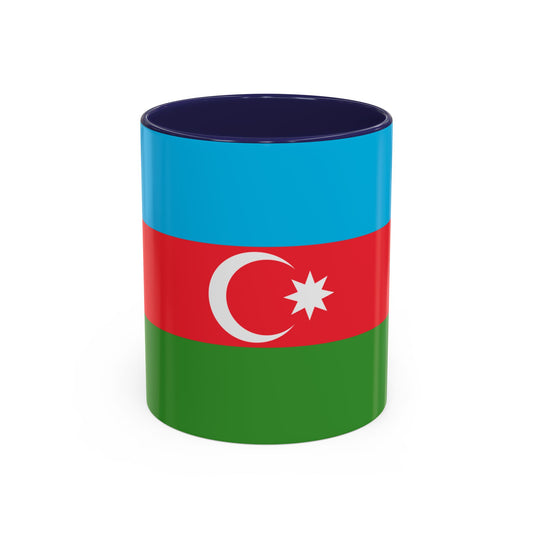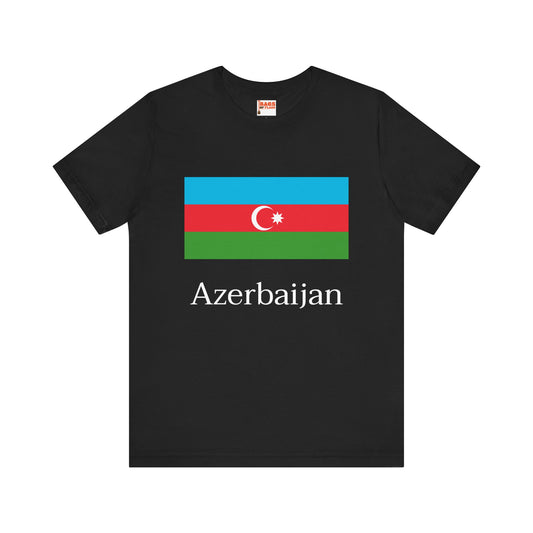-
Azerbaijan Leather Patch Hat
Regular price $18.85 USDRegular priceUnit price / per -
Azerbaijan Pillow
Regular price $22.65 USDRegular priceUnit price / per -
Azerbaijan Backpack
Regular price $59.79 USDRegular priceUnit price / per -
Azerbaijan Sweatshirt
Regular price $34.15 USDRegular priceUnit price / per -
Azerbaijan Flag Sweatshirt
Regular price $34.15 USDRegular priceUnit price / per -
Azerbaijan Mug
Regular price $11.65 USDRegular priceUnit price / per -
Azerbaijan Trucker Cap
Regular price $14.90 USDRegular priceUnit price / per -
Azerbaijan Hoodies
Regular price $34.40 USDRegular priceUnit price / per -
Azerbaijan T-shirts
Regular price $22.79 USDRegular priceUnit price / per -
Azerbaijan Flag on Hoodie
Regular price $34.40 USDRegular priceUnit price / per -
Azerbaijan Flag on T-shirt
Regular price $22.79 USDRegular priceUnit price / per
Collection: Azerbaijan
The Azerbaijan flag, also known as the Flag of Azerbaijan, symbolizes national pride and the country's identity. We will explore the design, historical context, symbolism, current relevance, and additional facts and protocols related to the Azerbaijan flag.
Overview of the Azerbaijan Flag's Design and Colors

At the heart of Azerbaijan's national emblem lies a tricolor banner, each stripe conveying a deeper narrative of the nation's heritage and values. The top stripe is a vibrant shade of blue, signifying the Turkic roots that weave through the fabric of Azerbaijani identity. Central to the flag is a rich red stripe, a testament to the country’s aspirations toward progress and its commitment to democratic principles.
Anchoring the flag is a lush green stripe symbolic of the Islamic faith, constituting a significant facet of the nation's cultural and spiritual landscape. Commanding attention at the center of the red stripe is a white crescent moon and an eight-pointed star, symbols steeped in Islamic tradition yet conveying messages of peace and unity. Together, these elements craft a flag that is not just a marker of sovereignty but a vibrant tapestry that narrates Azerbaijan’s past, its present, and dreams of its future.
Historical Context of the Azerbaijan Flag

The journey of the Azerbaijan flag through history is both compelling and symbolic, marking critical moments of national transformation and identity. Initially adopted on November 9, 1918, with the birth of the Azerbaijan Democratic Republic, it symbolized the emergence of a new, independent nation keen on establishing its place in the world. This flag, however, was shelved in the subsequent decades when Azerbaijan became a Soviet Republic, and a series of flags reflecting Soviet iconography and ideology replaced it.
The original tricolor design was relegated to the annals of history until a pivotal moment in 1991. As the winds of change swept across the Soviet Union, leading to its dissolution, Azerbaijan again embraced its original flag in a profound act of reclamation of its sovereignty and independence. On February 5, 1991, this act restored the flag's legal status and reaffirmed the nation's enduring values and aspirations. Throughout these changes, the flag has served as a potent symbol of Azerbaijan's enduring spirit, its struggles for independence, and its aspirations for a future built on the principles of freedom, democracy, and national identity. This historical journey from inception, through suppression, to reinstatement mirrors the resilience and unyielding spirit of the Azerbaijani people.
Symbolism Behind the Azerbaijan Flag
The elements and colors of the Azerbaijan flag are imbued with rich meanings that underscore the nation's identity and ideals. The blue stripe is a nod to the Turkic heritage, connecting the country to the larger Turkic world and its cultural and historical bonds. Red stands as a beacon of progress and the pursuit of a democratic society, reflecting the nation’s commitment to evolving and advancing in the global community.
Green symbolizes the Islamic faith, highlighting Azerbaijani society's religious and spiritual ethos. At the heart of the flag, the white crescent moon and an eight-pointed star are not merely Islamic symbols; they also articulate the country's aspirations for peace and unity, with the star's eight points representing the eight Turkic peoples, underscoring the sense of solidarity and shared destiny among them. These symbols together narrate a story of a nation that honors its past, is keen on present development, and looks forward to a future where peace and unity prevail.
Current Relevance of the Azerbaijan Flag
Today, the Azerbaijan flag is a beacon of national pride and unity. It is common at significant public events, adorning streets during national holidays such as Republic Day and Independence Day. The flag is also solemnly raised in military ceremonies, symbolizing the honor and courage of the Azerbaijani armed forces. In educational institutions, the flag plays a crucial role in instilling a sense of patriotism among students, and it is often featured in school ceremonies and national education programs.
The flag's presence extends beyond Azerbaijan's borders, serving as a symbol of diplomatic pride and cultural identity at international forums, embassies, and sports events. It represents the nation and its people on the global stage, signaling Azerbaijan's sovereignty and active participation in international affairs.
While the flag is a source of national pride, it has also been at the center of regional controversies, reflecting the complex geopolitical dynamics that the country navigates. Its display has sparked discussions and, at times, tensions, particularly in contexts related to Azerbaijan's territorial disputes. Despite these challenges, the flag remains a powerful symbol of the country's resilience and unity, embodying the Azerbaijani people's collective aspirations and enduring spirit. It is a marker of territorial sovereignty and a reminder of the ongoing quest for peace, progress, and a harmonious future for all Azerbaijanis.
Additional Facts and Protocols Related to the Azerbaijan Flag
The display and handling of the Azerbaijan flag follow strict protocols emphasizing the respect and reverence it commands. When being raised or lowered, the flag should be handled carefully to ensure it does not contact the ground, underscoring the dignity of the nation it represents. In formal settings, when the national anthem accompanies the flag's hoisting, it is customary for individuals to stand as a gesture of respect, often placing their right hand over their heart. This protocol is observed in various settings, from schoolyards to national monuments, highlighting the flag's role in fostering a collective sense of patriotism.
An intriguing aspect of the flag's history is its temporary alteration during the Soviet period when religious symbols were omitted to align with the atheistic ideals of the era. However, the nation's original flag, complete with its Islamic symbols, was proudly reinstated following Azerbaijan's declaration of independence, returning to its historical roots and cultural identity. This reinstatement is celebrated annually, a testament to the flag's enduring significance in the heart of every Azerbaijani citizen.






















